Learn how to make sauerkraut with this simple step-by-step recipe. It’s easy — just slice, add salt, add to a jar, and wait!
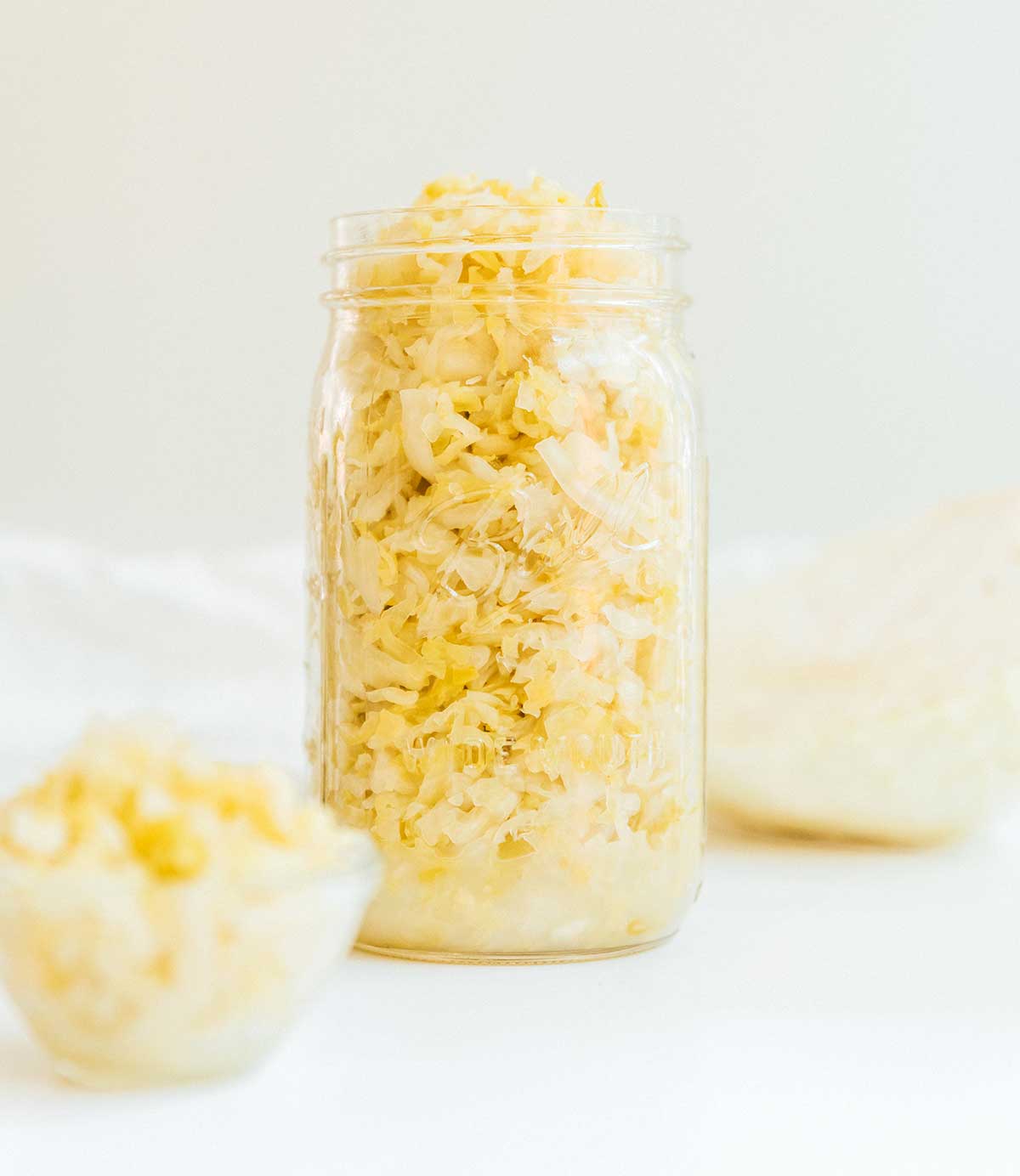
Ahhh, sauerkraut. You either love it or you hate it – today’s recipe goes out to those who love it! And if you hate it, well, maybe you’ll change your mind after making it yourself?
Sauerkraut is a mystery, but not one that can’t be solved with a quick science lesson.
There is yeast naturally occurring everywhere – in the air, on fruits and vegetables, even on you! When put in the ideal environment, the power of yeast is harnessed and fermentation happens! The resulting chemicals change the consistency and flavoring of the veggie, in this case leaving us with sauerkraut.
The good news? The resulting sauerkraut tastes great. The other good news? It’s healthy. Sauerkraut is filled with Vitamins K2, A, and C, as well as probiotics and other nutrients. It’s a win-win kinda situation.
Reader rating
“I make sauerkraut all the time and this recipe is exactly what I do! It’s unbelievably easy!” —Kashi
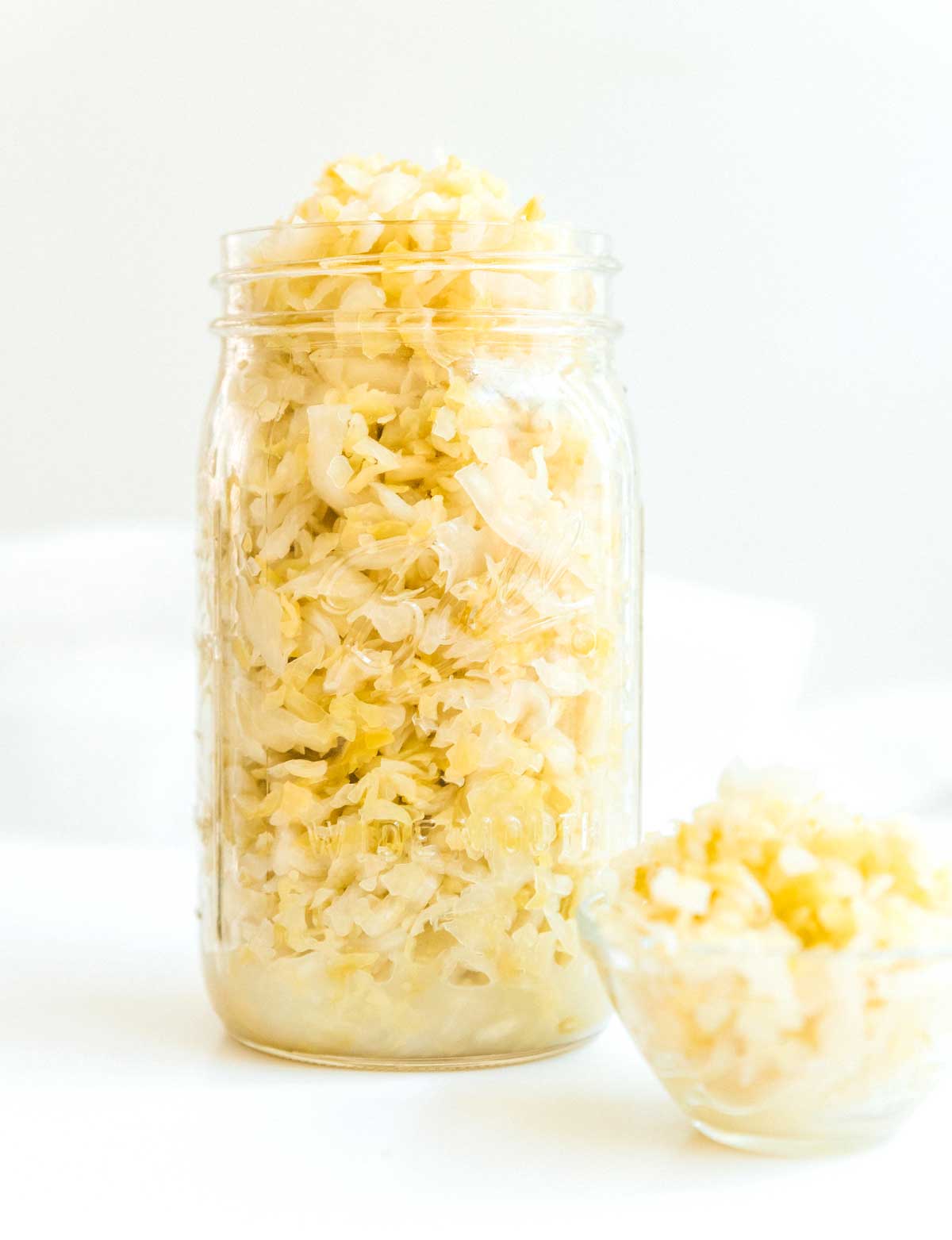
Ingredients Needed to make Sauerkraut
To make your own homemade sauerkraut, you’ll only need three things: green cabbage, salt, and a jar. You can optionally include caraway seeds to add a bit of extra flavor!
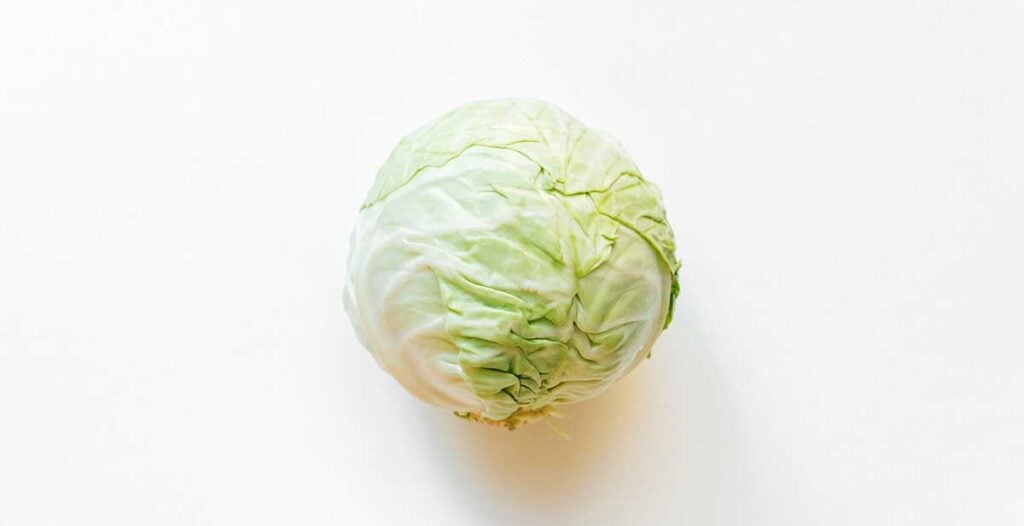
How to make sauerkraut
The process for making this sauerkraut recipe isn’t complicated — it’s actually simpler than you may expect! Anything involving fermentation gets a rep for being difficult to make, but that isn’t the case here. The most extensive part is the fermentation process, but that’s just a waiting game!
Step 1: Sterilize
Wash your hands well before every time you touch the ingredients. Wash all of the supplies with hot water. Fermentation is all about allowing the right bacteria and yeast to flourish, which means we’ve got to work hard to keep out the bad guys.
Step 2: Cut the cabbage
Next, discard the wilted outer leaves of the cabbage. Rinse well, and then cut the head into 8 wedges lengthwise. Lay each wedge flat on your cutting board, and then cut into thin ribbons.
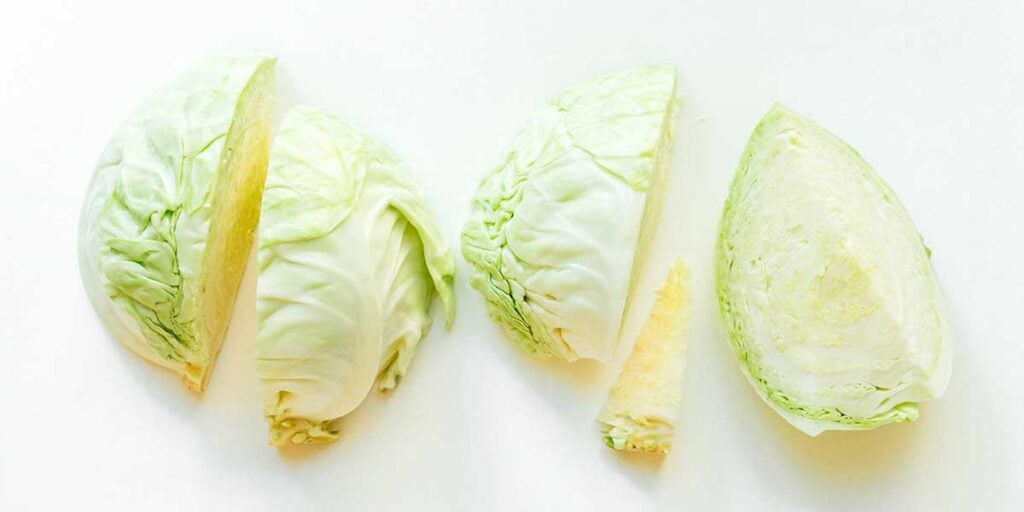
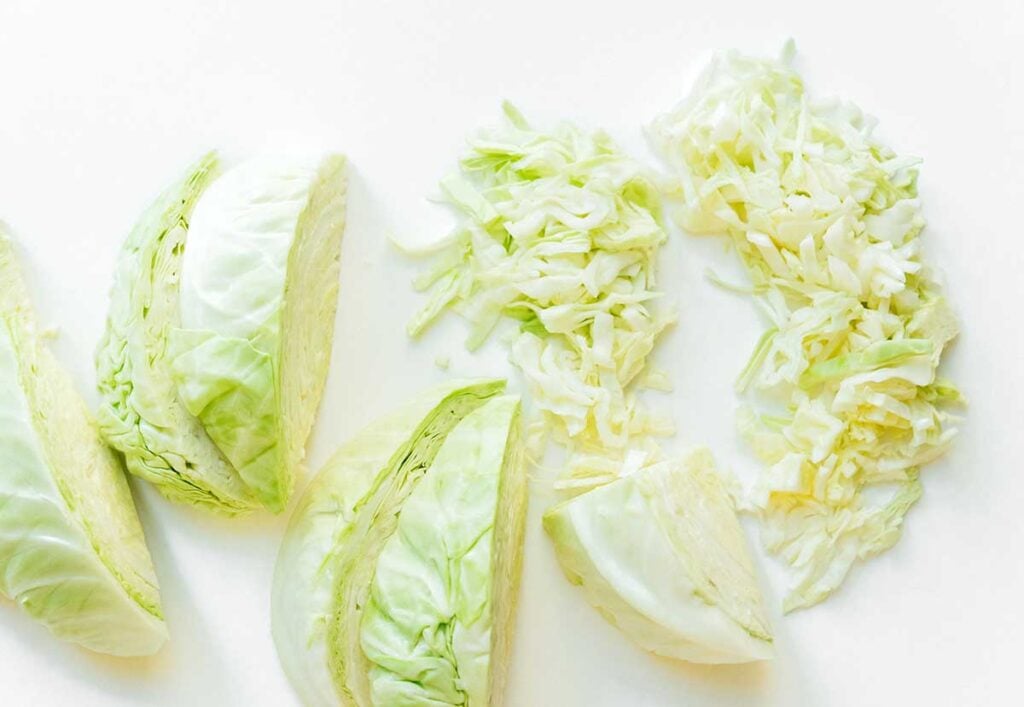
Step 3: Brine the cabbage
Place the shredded cabbage in a large bowl and sprinkle it with salt. Work the salt into all of the leaves, massaging and squeezing the shredded cabbage for about 5 minutes, or until it has wilted quite a bit. If you’re adding caraway seeds, mix them in now.
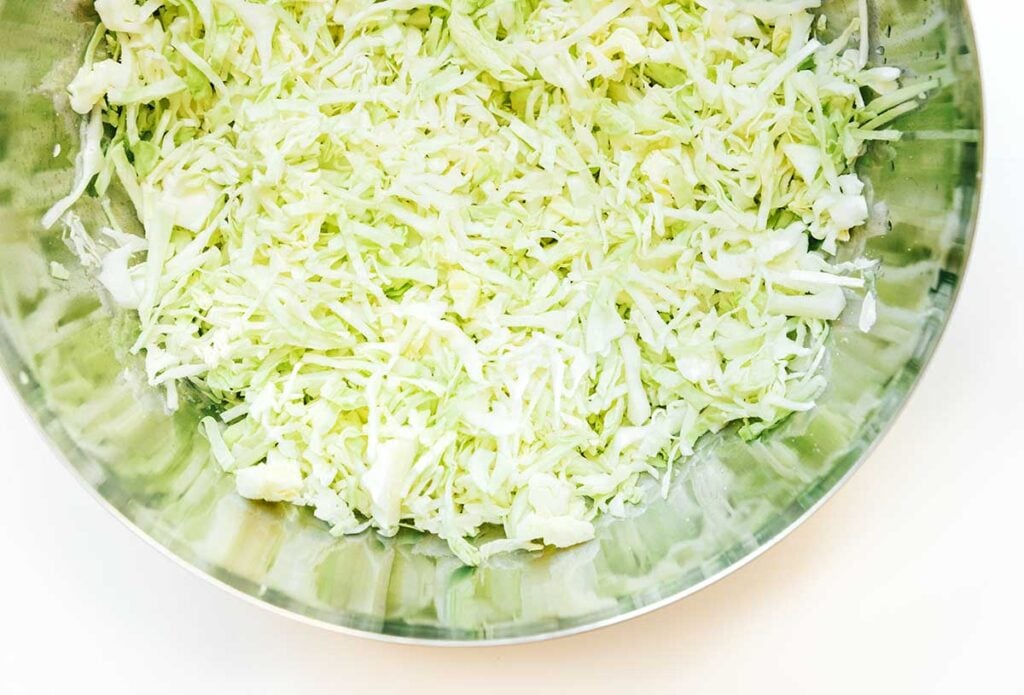
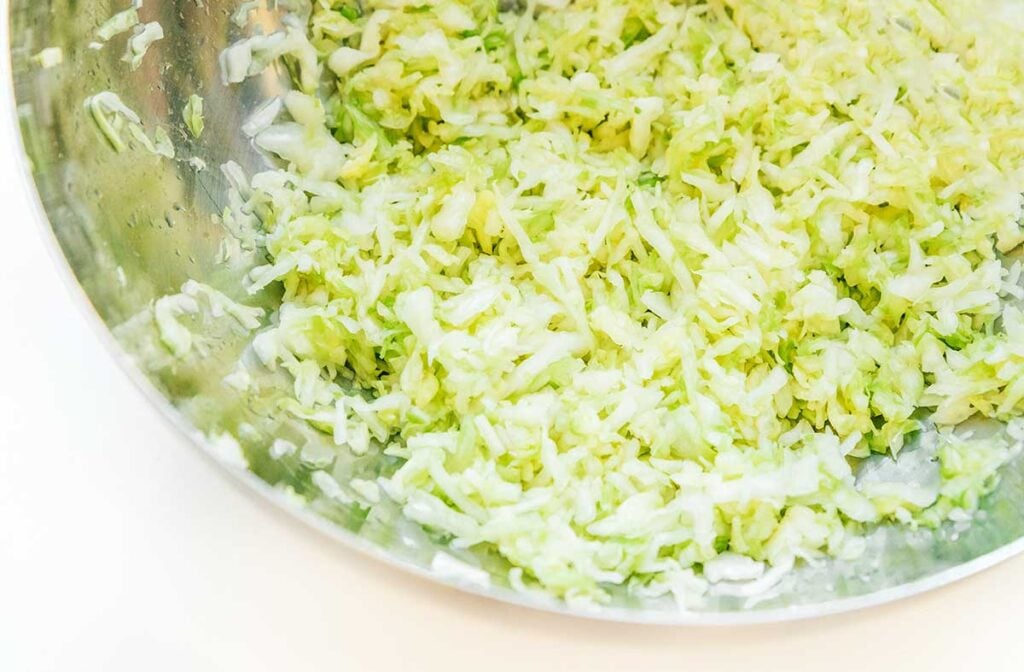
Step 4: Add the cabbage to jars
Pack the mixture into clean glass jars — 2 lbs of cabbage should fit into a 32 oz mason jar once wilted down. Press the cabbage down so that it’s submerged by the juices and there are as few air pockets as possible. Top if off with any liquid that may remain in the bowl from when you were massaging it.
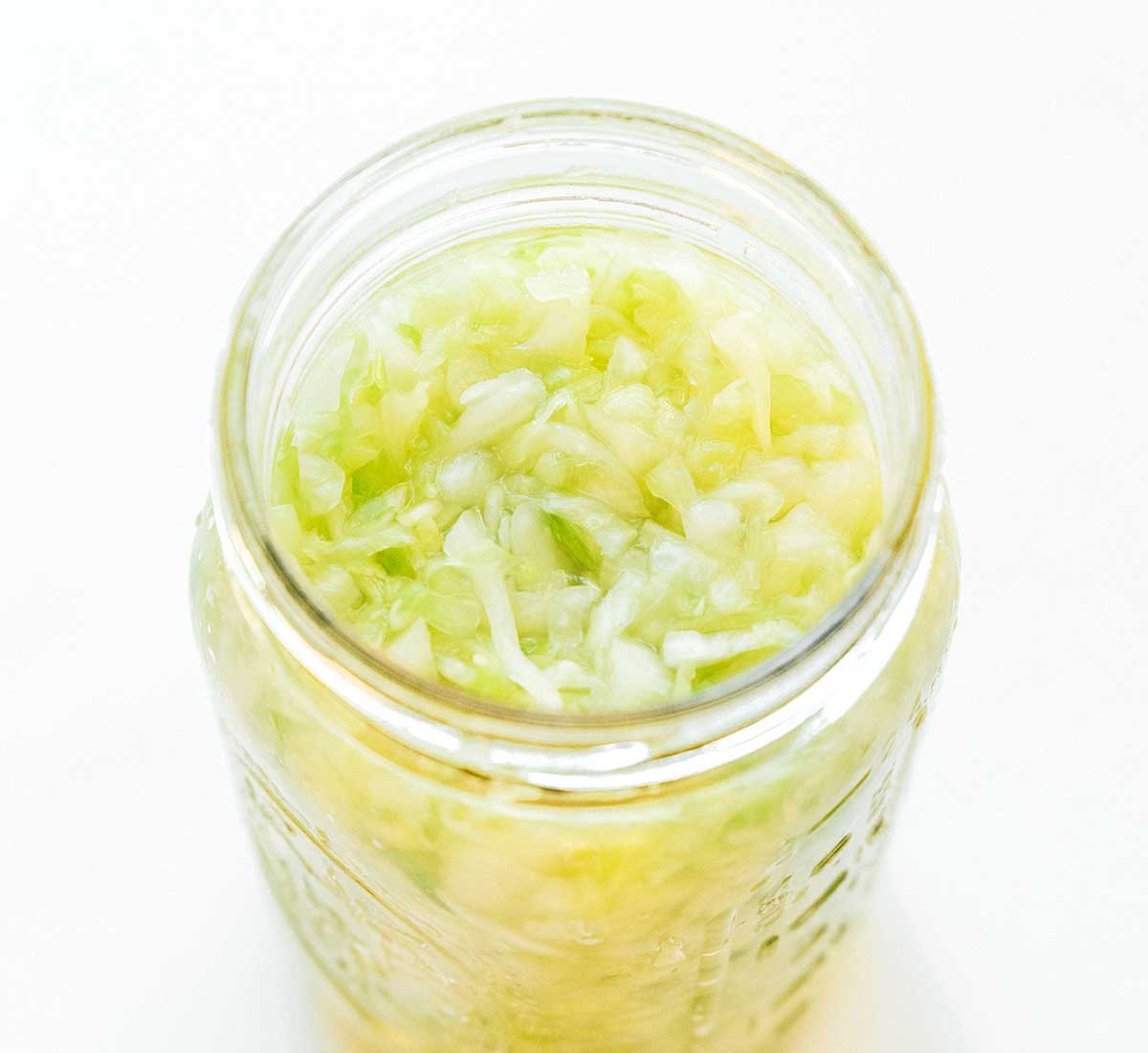
Step 5: Weight it down
Use a fermentation weight (or a narrow glass) to hold the cabbage leaves under. Everything needs to be submerged to prevent mold. To keep any cabbage shreds from floating up, I like to place a whole cabbage leaf on top of the mixture, tucking the edges under. Then just set the fermentation weight on top of that!
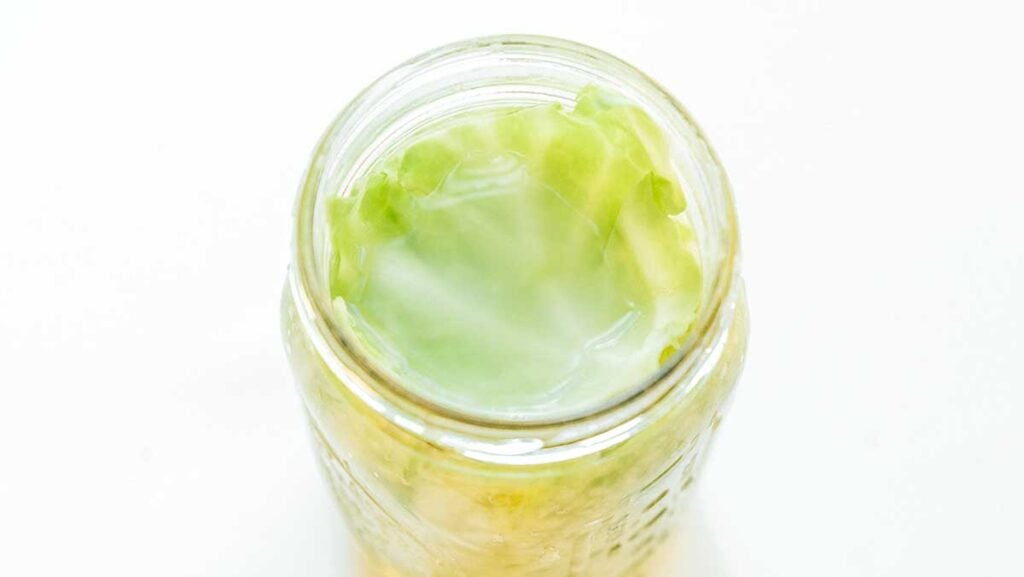
Step 6: Cover the jar
Cover with a clean cloth (towel, paper towel, etc.) and secure the towel with a rubber band. This allows airflow while keeping out pests.
Step 7: Allow to ferment
Place the jar(s) at room temperature and out of direct sunlight, letting it ferment for 3 to 14 days. Check daily, and stamp down the cabbage as needed to keep it submerged. Begin tasting after 3 days. It’s done when the taste is slightly sour and the cabbage is a bit soft (depends on your taste — a longer fermentation will result in a more sour, less crunchy sauerkraut). When finished store in the fridge to stop the fermentation process.
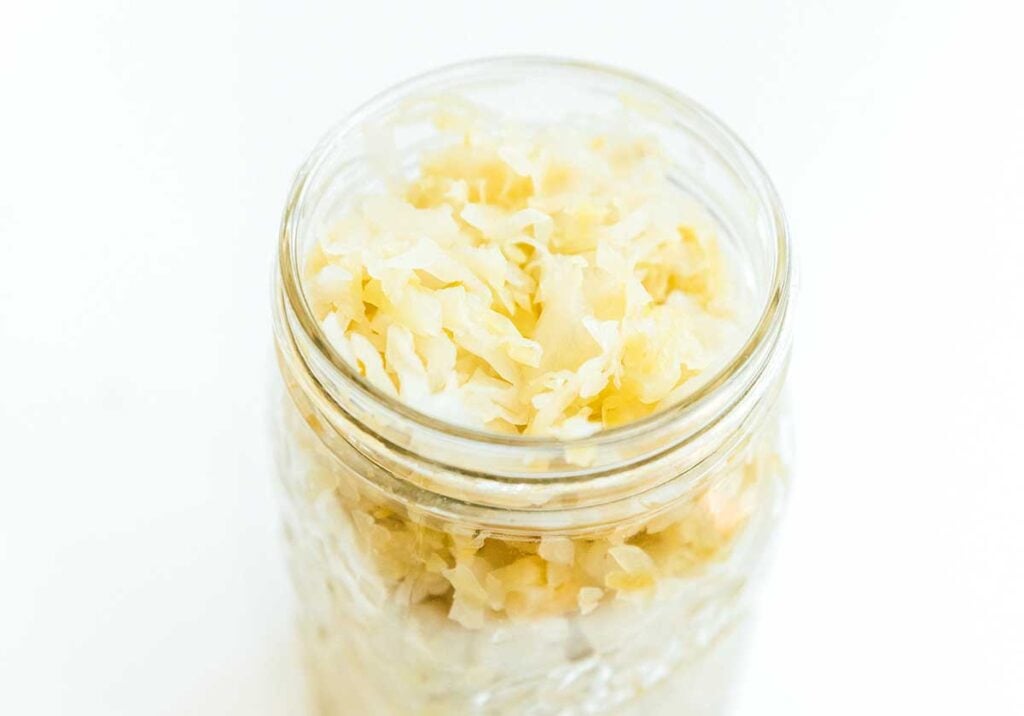
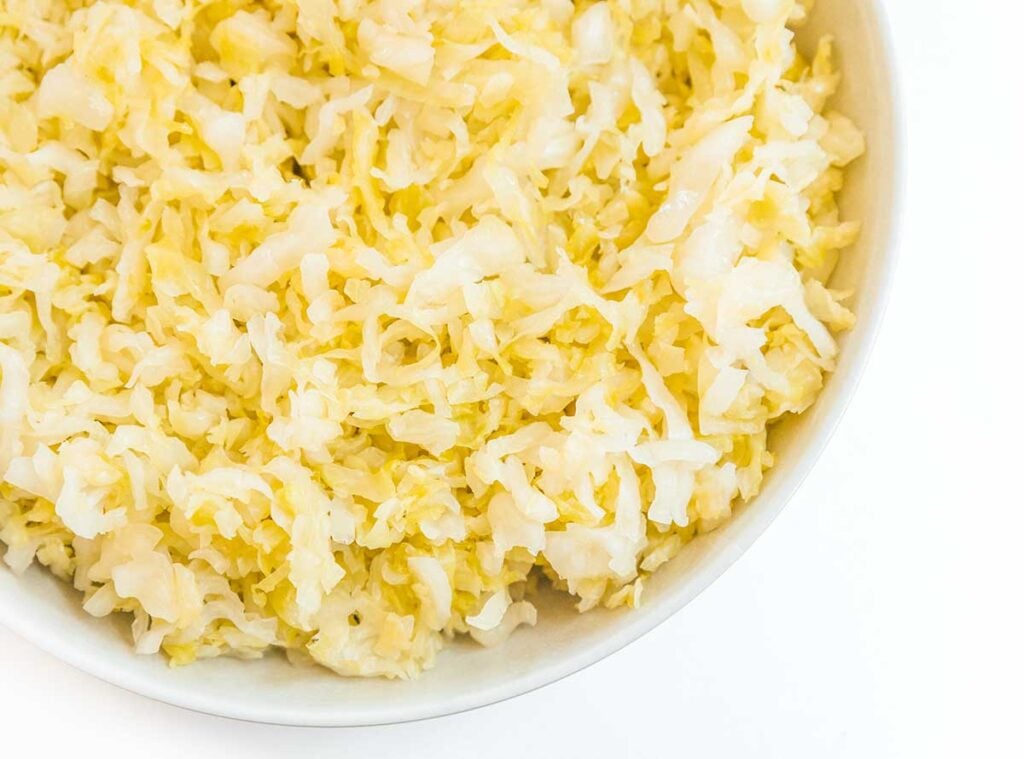
How to enjoy sauerkraut
Sauerkraut is one of those ingredients that can be used in a million different ways (even dogs can eat sauerkraut!). One popular use is to add it to lettuce-less salads like “tuna” salad or egg salad. It adds a slight bite and tastes great accompanied by the other ingredients.
You can also use it atop tacos, sandwiches, paninis, or even on burgers or burritos! Some of my favorite recipes include sauerkraut! It just adds an extra layer that amplifies the taste so well.
- Hungarian Unstuffed Cabbage
- Reuben Seitan Sandwich
- Sauerkraut Soup
- White Bean Chili
- Vegetarian Pita Bratwurst
- Sauerkraut Salad
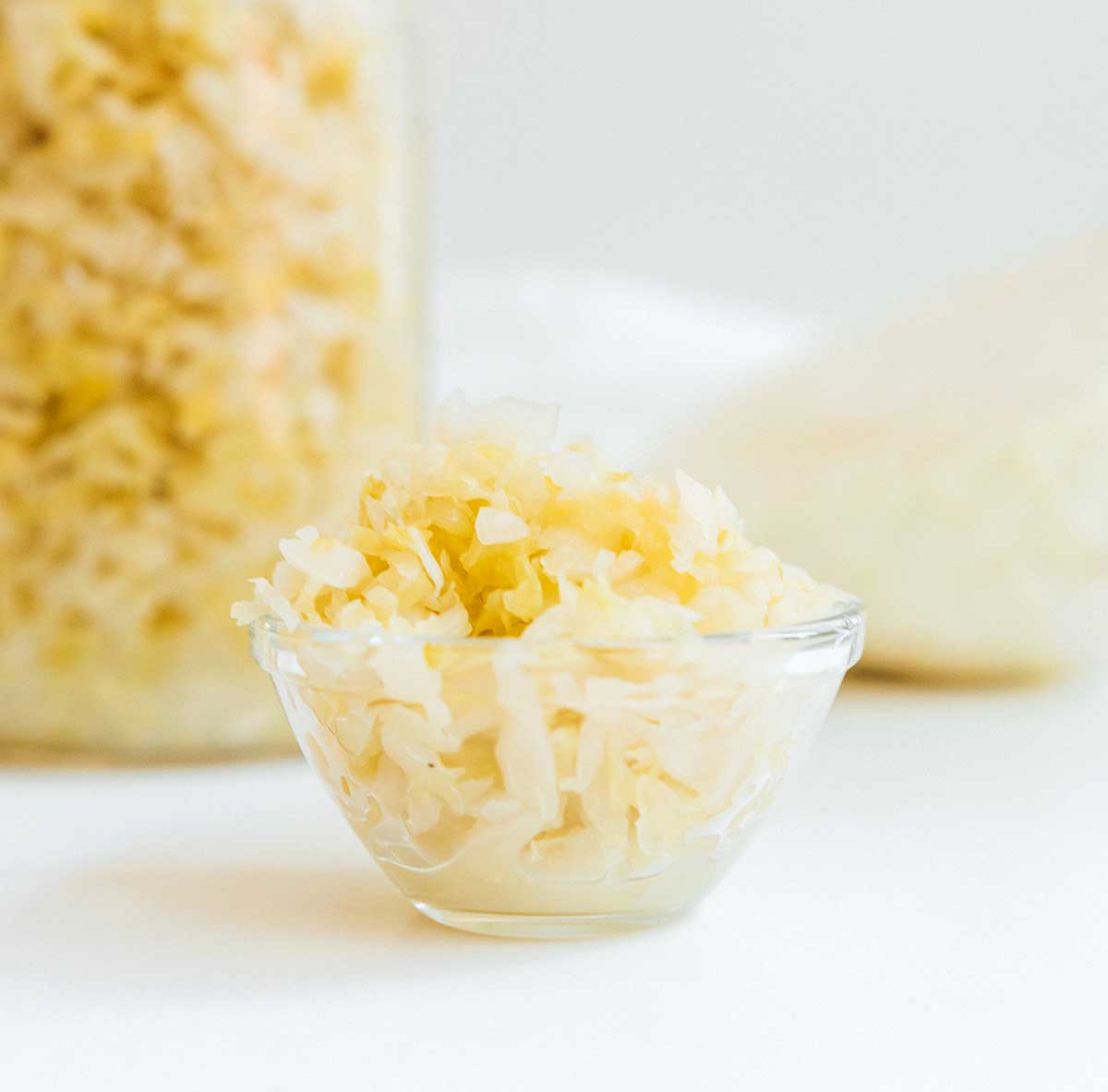
Sauerkraut vs. Kimchi
Sauerkraut and kimchi are both fermented foods made from cabbage, so what’s the difference? While sauerkraut is an Eastern European fermented cabbage with a sour flavor, kimchi is Korean and tends to be spicer!
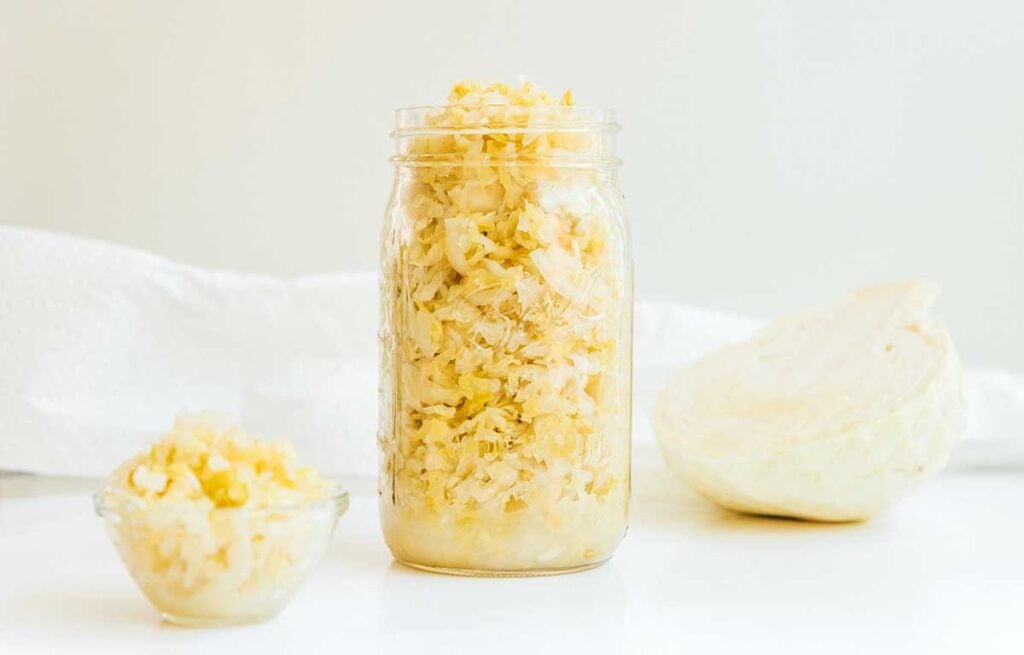
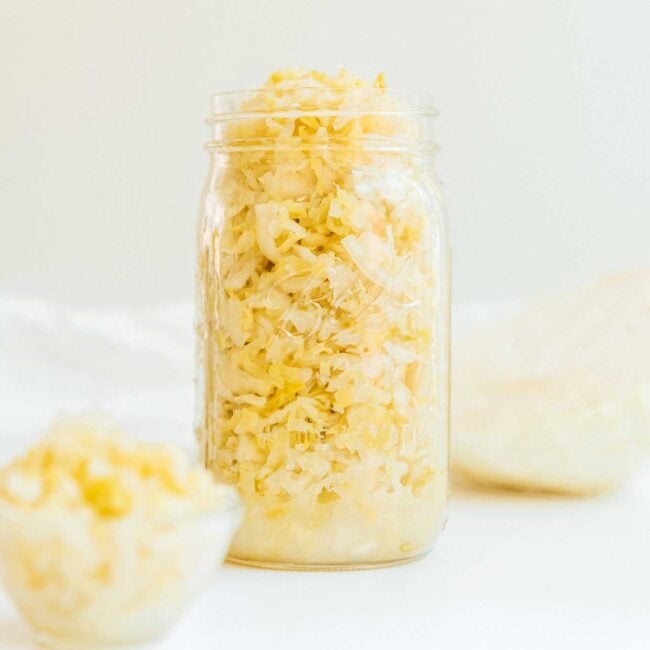
Ingredients
- 2 lb green cabbage 900 g
- 1½ tsp salt
- 1 tsp caraway seeds optional
Instructions
- Sterilize: Wash your hands well before every time you touch the ingredients. Wash all supplies with hot water.
- Cut: Discard the wilted outer leaves. Rinse the cabbage well, then cut it into 8 wedges, lengthwise. Lay each wedge flat on your cutting board, then cut into thin ribbons.
- Brine: Place shredded cabbage in a large bowl and sprinkle with salt. Work the salt into all the leaves, massaging and squeezing the shredded cabbage for about 5 minutes, or until it has wilted quite a bit. If adding caraway seeds, mix them in now.
- Pack: Pack the mixture into clean glass jars (2 lbs of cabbage should fit in a 32 oz mason jar once wilted down), pressing down so that it’s submerged by the juices and there are as few air pockets as possible. Top it off with any liquid that may remain in the bowl from when you were massaging it.
- Weigh It Down: Use a fermentation weight (or a narrow glass) to hold the cabbage leaves under – everything needs to be submerged in liquid to prevent mold. To keep any cabbage shreds from floating up, I like to place a whole cabbage leaf on top of the mixture, tucking the edges under. Then just set your fermentation weight on top of that!
- Cover: Cover with a clean cloth (towel, paper towel etc) and secure the towel with a rubber band. This allows airflow while keeping out pests.
- Ferment: Place somewhere room temperature and out of direct sunlight, letting it ferment for 3 to 14 days. Check daily, stamping down the cabbage as needed to keep it submerged. Begin tasting after 3 days. It's done when the taste is slightly sour and cabbage is a bit soft (depends on your taste – longer fermentation will result in a more sour, less crunchy kimchi). When finished, store in the fridge to stop the fermentation process.
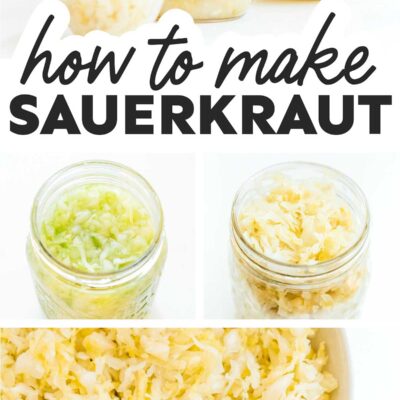

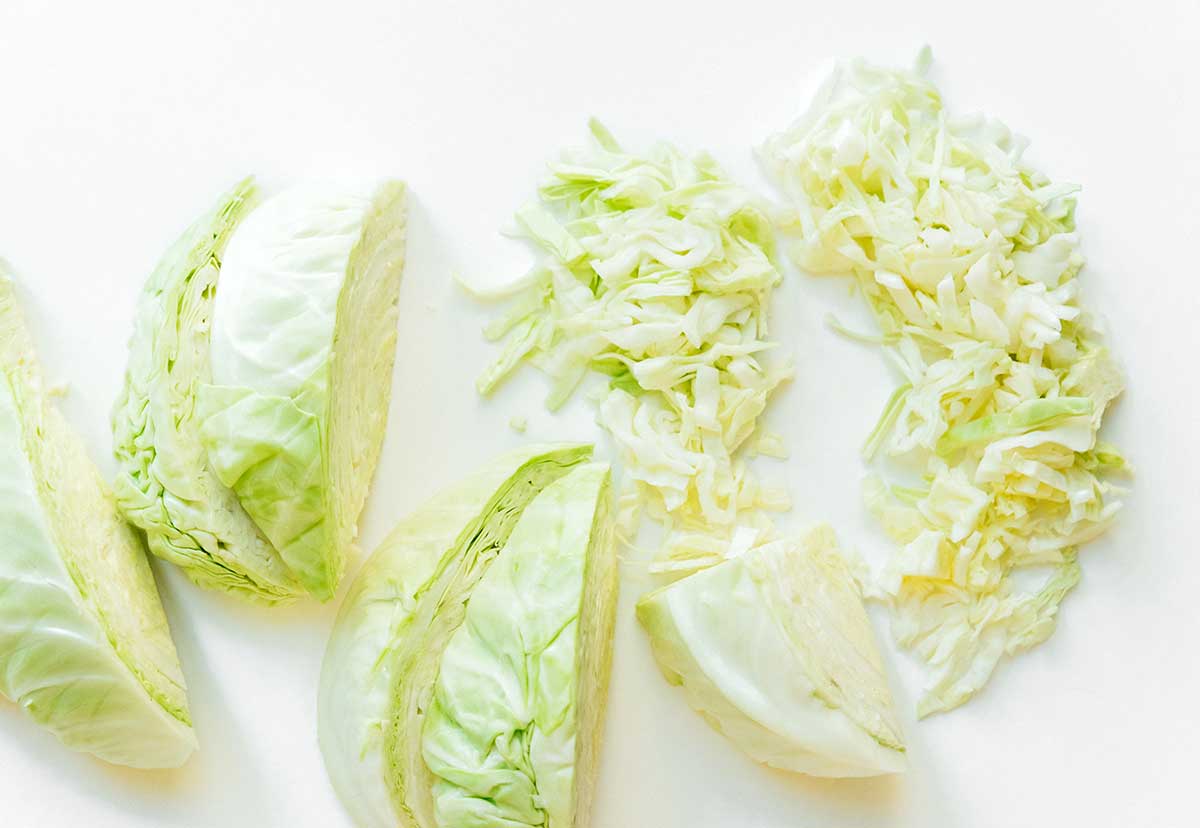
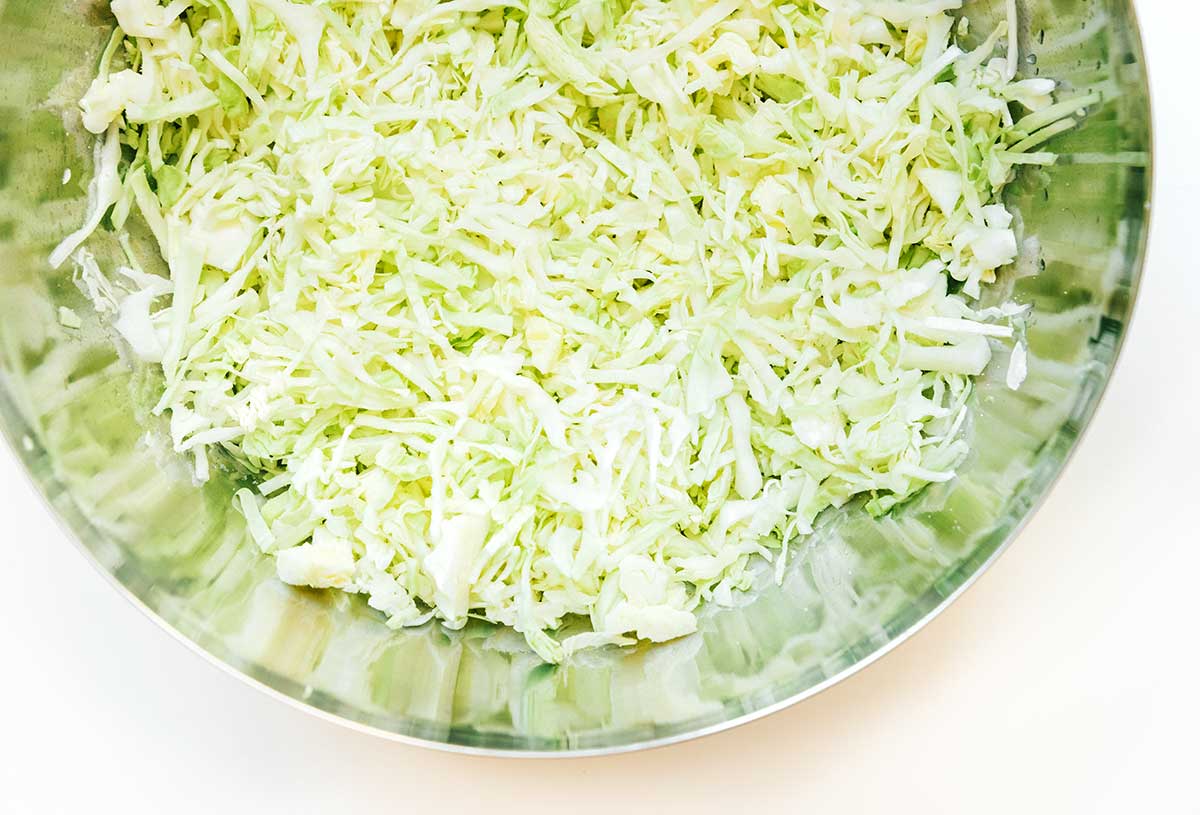
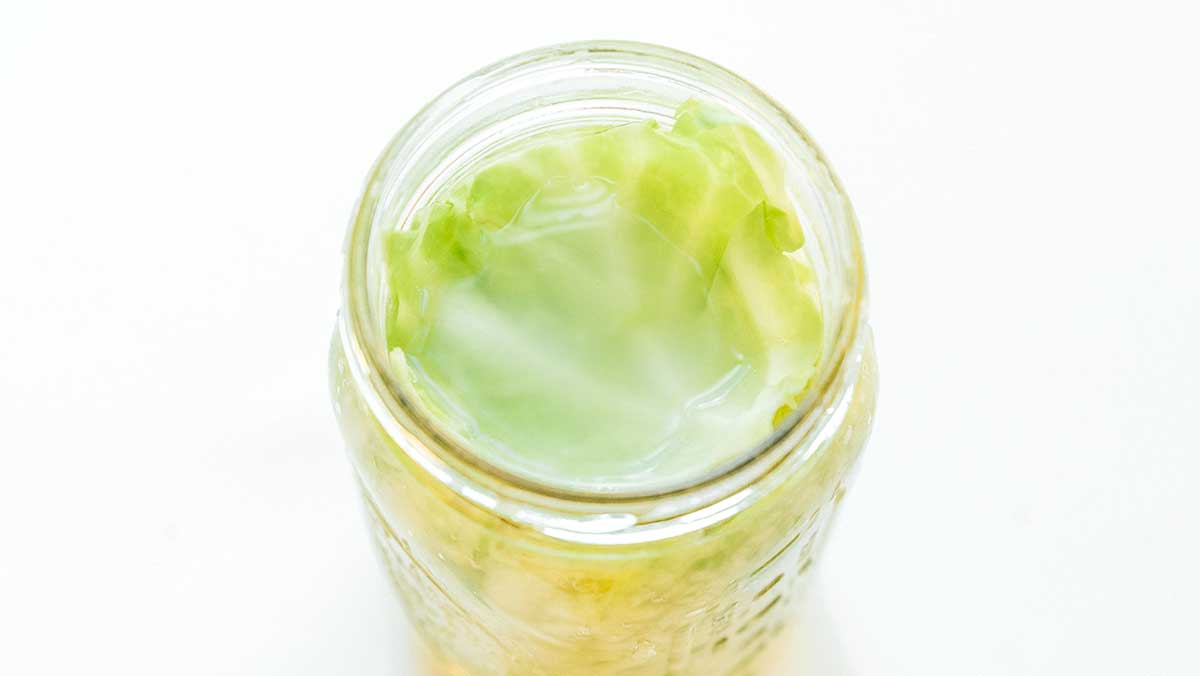
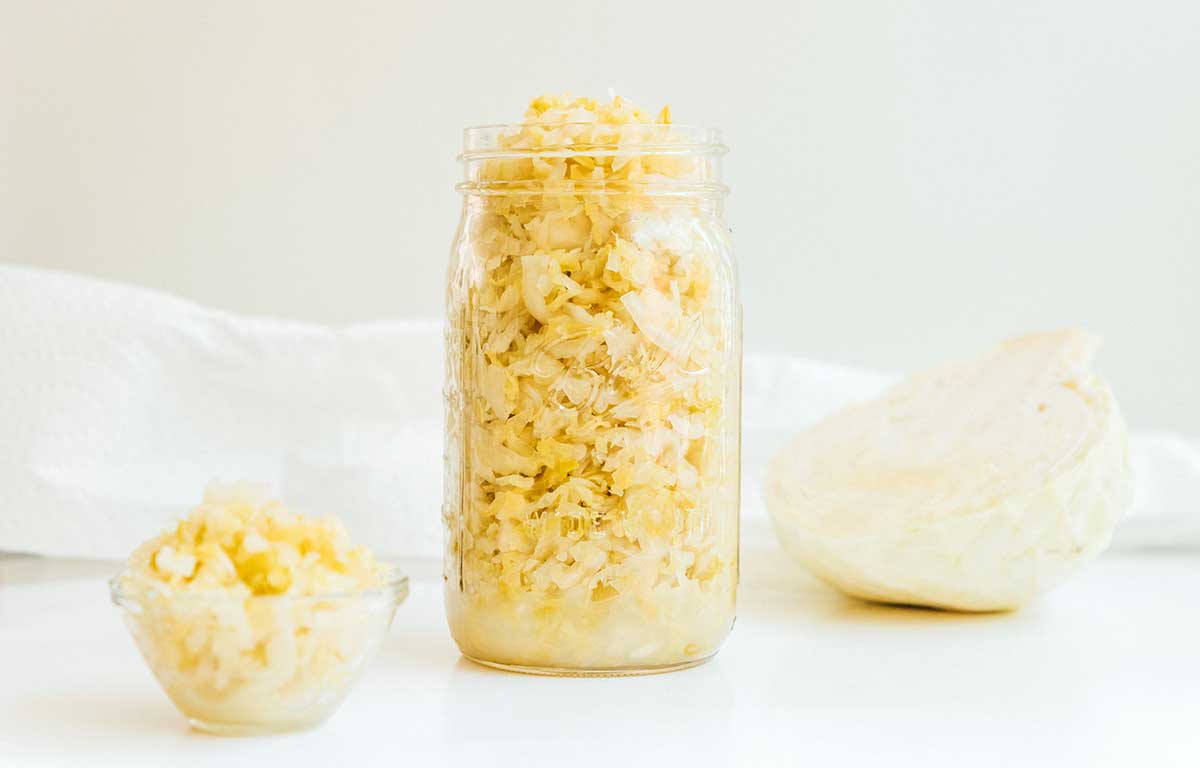


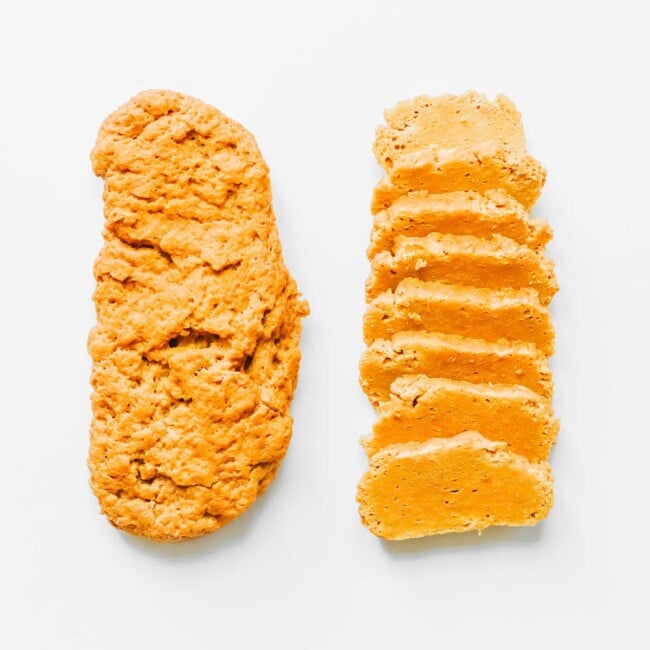
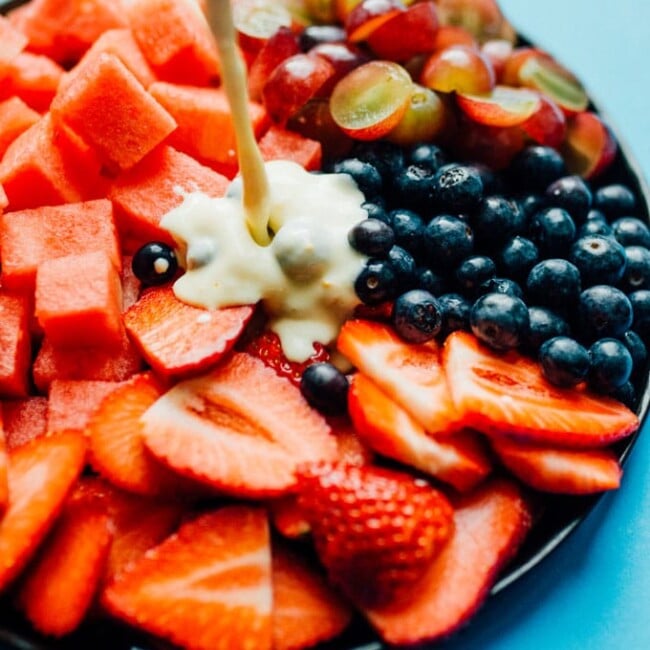
Nora Lucas says
I love sauerkraut – looking forward to making this recipe.
Tricia says
Hello! I’ve frozen a large head of farm share cabbage and never thought to make kraut! Can this recipe use frozen cabbage versus fresh? Many thanks.
Sarah says
I would expect that the colony of naturally occurring yeast on the cabbage might be weaker if it has been frozen, but it’s worth a shot! If it’s not bubbling in a few days, you’ll know the yeast weren’t strong enough after freezing.
aUDREY says
When you heat sauerkraut, you kill some of the good stuff so one of our favorite ways is on a grilled Brats hotdog. It’s delicious and no heating.
Kashi Frank says
I make sauerkraut all the time and this recipe is exactly what I do! It’s unbelievably easy!
Michelle says
HELP!
5 Star recipe. Following instructions….meh.
I made it. My first time making homemade saurkraut. Guess what? I forgot about it. I’m pretty sure it’s been a week. I put it in the cupboard, out of the light. Had it squished down into the liquid with another glass, an elastic holding it there. Covered with a towel, and away it went.
Today it looks not too bad colour wise. However, there is no liquid left. I tip the jar, and there doesn’t appear to be any. It doesn’t appear completely dry though, like the saurkraut. It needs the liquid though, doesn’t it?
Sarah says
Yep it needs some liquid! You can add some salted water (a brine) to help cover the cabbage again 😀